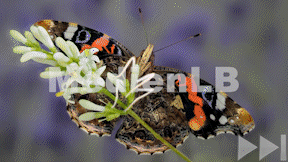 Biologie, Grundschule
Biologie, Grundschule


46505344 / 55505958
Heimische Schmetterlinge
Artenvielfalt, Aussehen, Lebensraum
Schmetterlinge (Lepidoptera) zählen mit derzeit etwa 160.000 beschriebenen Arten zu den Insekten. Bis auf Antarktika gibt es sie überall auf der Welt.
Der Film zeigt anschaulich den Prozess der Metamorphose, die Merkmale der bunten Tag- und grauen Nachtfaltern, deren Eigenschaften und Lebensräume, drohende Gefahren und Schutzmaßnahmen.
Im Mittelpunkt stehen heimische Schmetterlinge. Nahaufnahmen zeigen u.a. das Tagpfauenauge, den Zitronenfalter, das einem Kolibri gleichende Taubenschwänzchen oder auch die Gammaeule. Ob bunt, ob grau – Schmetterlinge sind Bioindikatoren, die sehr sensibel bezüglich der Einflüsse auf unsere Umwelt reagieren und zeigen, wie es um sie bestellt ist.
Interaktive Aufgaben, Testfragen und Glossar wurden mit H5P erstellt und können ohne weitere Software verwendet werden.
Trailer abspielen

Lehrplanzentral und an den Bildungsstandards orientiert
Passend dazu
Admiral
Der Admiral zählt zu den heimischen Tagfaltern. Kennzeichnend ist das schwarz-rote Muster auf seinen dunklen Flügeln mit weißen Flecken am Rand.










